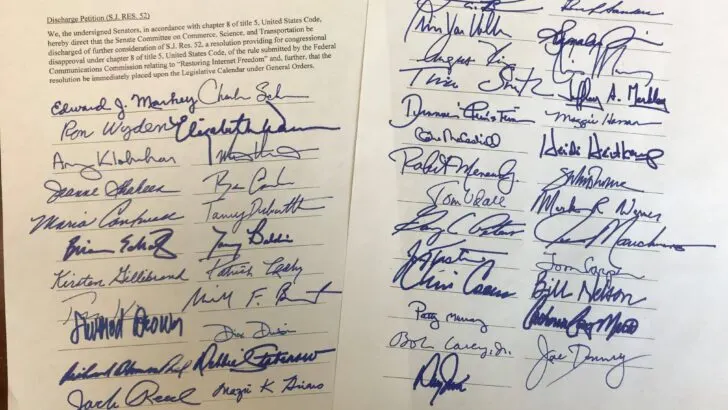A “discharge petition” is a strategic, often controversial, legislative tool that serves to circumvent traditional committee review and bring a bill directly to the floor for a vote.
Rooted in the rules of the House of Representatives, the discharge petition operates as a type of procedural maneuver to break a legislative impasse, often employed when a bill is “stuck” in committee and not scheduled for any further action.
This device empowers a majority of House members (usually 218 out of 435) to force a bill out of a committee for a floor vote, effectively usurping the power traditionally held by committee chairs and party leadership to set legislative agendas.
In the Senate, the process is far more seldom used and complicated, involving a discharge motion that can be debated and is subject to filibuster.
Executing a “Discharge Petition”
While the concept of a discharge petition is straightforward, the process of successfully executing one is quite intricate.
The first step involves filing the petition, which is typically done publicly, but the list of signatories is kept confidential unless the petition gains enough support to be successful.
The secrecy serves to minimize political repercussions for those who sign, as the act is often seen as a defection against party or committee leadership. Members of Congress may add or remove their names to the list until the requisite number is reached.
If the petition garners sufficient support, a floor vote is scheduled, and the bill is debated and voted upon, often without the possibility of amendment—a key difference from regular order.
Notably, the discharge petition is most effective in the House, as the Senate’s rules make it much more difficult to enforce.
Moreover, the petition does not guarantee a bill’s passage; it merely assures that the bill will receive a vote on the floor.

Use of “Discharge Petition” in a sentence
- The discharge petition, initiated by a bipartisan group of House members, succeeded in bringing the long-stalled climate change bill to the floor for a vote, much to the chagrin of the committee chair who had kept it sidelined.
- Despite strong opposition from party leadership, some lawmakers are considering using a discharge petition to force action on campaign finance reform.
- The political risks of signing a discharge petition are high; doing so can signify a break from party leadership and may have repercussions during the next committee assignment period.